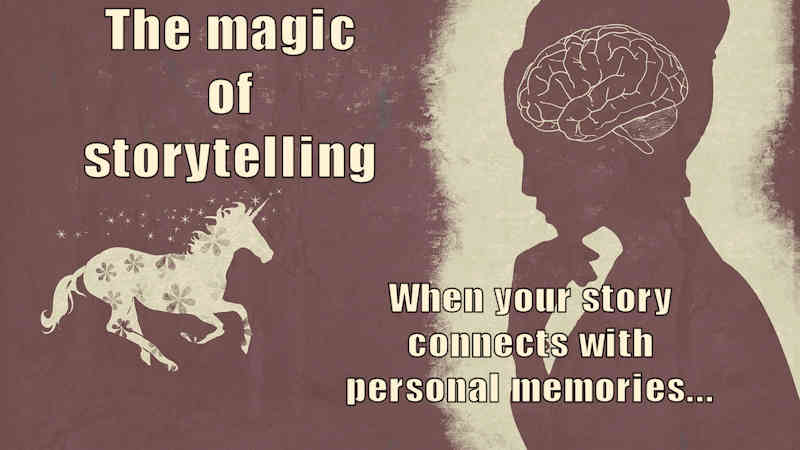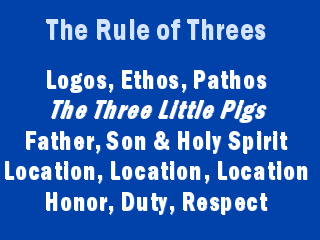Keep your audience engaged
What good is a great speech unless you can keep your audience engaged? After you have decided on your central message and gathered the material you want to present, you should think carefully about your presentation from the audience's perspective.
What's in it for them?
Great presentations require planning and preparation. Good business communication requires that you have both solid content and an effective delivery. Here are some rhetorical devices and tips that will help you transform your next speech from dreadful to dynamic.
Link your opening with your closing
Start with an attention-grabber that will make your audience want to hear more. That could be a story, a joke, a quote, some surprising data or statistics or perhaps a rhetorical question. Whatever you open with should tie to your main idea.
When you have covered your topic, think of a takeaway to close with that will hark back to your opening. So if you told a story or gave some data about a missed opportunity at the beginning of your speech, close with a reference to how that missed opportunity won't slip away next time.
Open and close with your overriding theme. You want to grab attention at the start and leave the audience with a takeaway at the end. Great openings and closings are critical and should be so you may have to develop a connection to them after you have put your presentation together.
Connect with stories to keep your audience engaged
Stories are the gold currency of speeches because they impart messages in a memorable way that cannot be achieved with just metrics, outlines or charts. When you tell a story, your audience automatically interprets it based on their own personal experiences which is why stories have such stickiness in our memories. Drawing from your own experience is best but you can also find great material in the media.

During a recent children’s story time, the speaker talked about different names a person can have. She revealed that her nickname as a child was Scout. When she said that, everyone in the congregation thought back to their own childhood nicknames and, at that moment, the speaker had a deeper connection will all her listeners.
Why?
Because she made an emotional connection. She caused listeners to link her words with their own experiences. Such techniques help engage your audience in ways that just informing them of facts can never do. They relate what you are saying to a personal memory which makes your message much easier to remember.
Query your audience
When you ask a question or make a reference to one member of your audience, everybody pays attention. So engage your audience frequently. Take short breaks to ask questions such as, "How many of you have ever...?" or "What is the first thing you think about when you hear...?"
Another tip is to find out something about one member of your audience -- perhaps the fact they run three miles before breakfast or have a passion for chocolate chip cookies -- some insignificant fact that you can work into your talk. An overt personal connection with one member of the audience translates into everyone paying close attention. And that is a way to keep your audience engaged.
Pay attention to timing and vocal variety
 The lure of the phone is one of a speaker's biggest challenges.
The lure of the phone is one of a speaker's biggest challenges.If you lack enthusiasm, so will your audience. If you speak like you are tired, your audience will go to sleep. And if your voice becomes monotone, you'll see the tops of heads as people surreptitiously look at their phones.
Avoid these pitfalls by paying attention to vocal variety.
Vary your pacing and pull the audience in by asking rhetorical questions. Or use questions to make a smooth transition from one topic to the next. Some great transitional questions include, "Now...what does this mean for us?" or "So, what are you supposed to do next?" Be sure to pause briefly to give you audience a few seconds to reflect.
Embrace the pause. Brief periods of silence and movement keep your audience engaged and also add interest. If you are on one side of the room and making a point, pause and move to the other side or shift the position of your body to make an alternate point. This tactic takes skill to look natural instead of rehearsed but movement is a good technique for giving a lively presentation.
And if you pause briefly, everybody looks up. The pause is one of a speaker's most powerful tools. That's why Mark Twain famously said, "No word was ever as effective as a rightly timed pause."
Vary the level of your voice. Lower your voice and pause to drive home a point. You want your voice to be sufficiently low for people to work some to hear you but not so low that they will miss what you are saying. Use a stage whisper. But raise your voice level on the important points. By varying your volume, you will keep your audience engaged with your points.
Say that again?
Use repetition to drive your point home. Listening to a talk is different from reading because you only have one shot at what is being said whereas you can always go back a re-read. Help people remember key points by repeating them several times.
All great speeches employ repetition. If you want examples of the effective use of repetition, listen to the "I have a dream speech" by Martin Luther King or just about any speech Winston Churchill or Barrack Obama made.
Be judicious in your use of supporting materials
Use PowerPoint or other screens as a supplement -- not your main event. If you want to keep your audience engaged, don't rely on PowerPoint. Looking at slides and reading from the screen are the two biggest sins that business presenters commit. Listeners don't need you to read to them and that's a guaranteed way to kill your connection with your audience. If you follow Guy Kowasaki's 10-20-30 PowerPoint rule, you will probably be fine.
Put details in handouts. You should put the procedures, URLs, background and supplemental information in handouts that people can take with them. That is the type of material that people need to read to absorb. But think about how you want your handouts to be used.
If you make handouts available before your speech, you will have to compete with the written material and it's hard to talk to people who are busy reading Yet giving handouts ahead will allow people to take notes if they wish. On the other hand, if you give the handout at the end of your presentation, you can do a business card exchange so that people can give you their contact information for future follow-up.
Tell them to listen near the ending of your speech
A minister who is a riveting speaker often uses this phrase toward the end of his sermon: If you don't hear anything else I say, hear this! Then he pauses for a few seconds and everybody tunes in. If you have an important takeaway that you want to be sure your audience absorbs, tell them to listen before you give them your key message.
Plan, prepare, polish
 The rule of threes means phrases in groups of three are more memorable.
The rule of threes means phrases in groups of three are more memorable.Use the rule of threes to drive your point home. Ideas, phrases or objects mentioned in groups of threes are easy to remember. Just think of the expressions you heard as a child -- Stop, Drop and Roll -- or religion -- the Holy Trinity. People tend to remember ideas, phrases or information grouped together as a triad.
As one of the most powerful rhetorical devices in your toolbox, the rule of threes can help your audience grasp your essential message.
Make three points. Tell three stories. Phrase your main idea in terms of three elements.
And finally . . .
Practice, practice, practice. Those who speak for a living will practice a presentation until they truly own it and their message becomes like a conversation with the audience. You cannot practice too much. And with the easy access to web cams, you should record yourself in order to see distracting habits you may have that your audiences notices but you don't.
Be authentic
This may be the most important rule of all. You want to know your presentation well and adopt rhetorical devices and speaking techniques that will add interest and variety. But you don't want to come off as a polished robot. Think about what you have to share with others that is important or exciting to you. But be yourself and not some idealized version of a speaker. After all, you are unique and interesting, so capitalize on your personal strengths.
All advice on this site was written by humans. No copy was written by AI.
Please support real writers.


